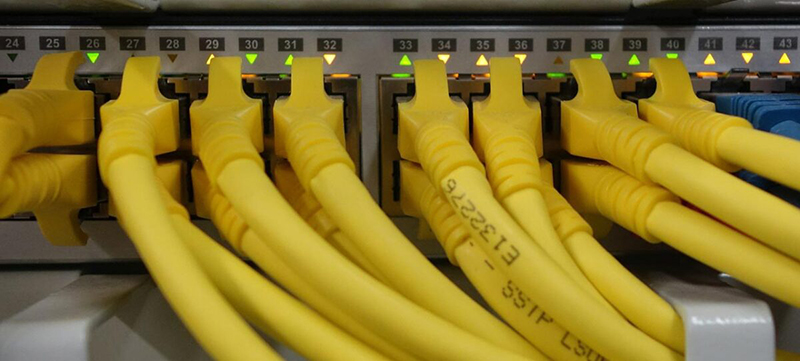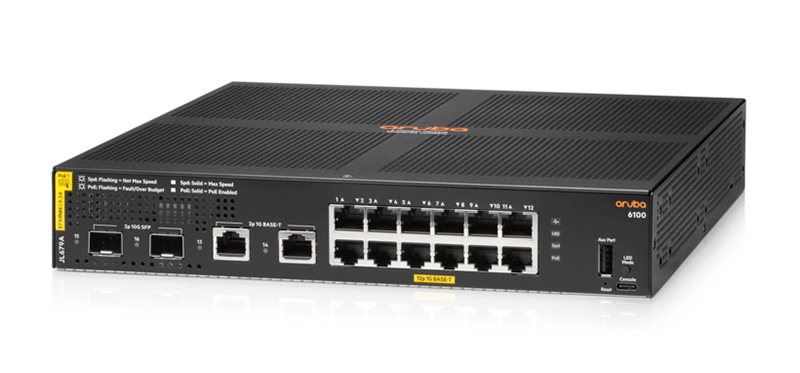
For many companies, the traditional network has become increasingly insufficient. Today’s enterprise networks must be fast and secure enough to link users and devices, and they need to handle massive amounts of data while delivering user-satisfying performance. In addition, the network also helps to operate, manage and protect the network more effectively through automation, automation, etc. Aruba’s CX switching portfolio is designed to address these challenges, addressing the most demanding use cases from the access layer to the core to the data center.
Aruba‘s switches come in many different families. We’ve covered the Aruba 6400 series switches before (click here to learn more). What are the features of the Aruba 6100 series (also the modern entry-level line)? Let’s take a look at the 6100 series switches.
Benefits
These access switches provide the performance, security, and simplicity that you need, making them ideal for branch offices, mid-market enterprises, and SMB networks.
- Enterprise-class layer 2 connectivity
This high-performance Layer 2 switch that supports ACLs, robust QoS, static routing, and IPv6 is ready to power your access layer.
- PoE and High Speed Uplinks
Convenient built-in 1/10GbE uplink and up to 370W Class 4 PoE for supporting IoT devices and wireless access points.
- Management flexibility
The fully programmable CX 6100 series supports multiple management options including cloud-based and on-premises central, CLI, switch web GUI, AOS-CX operating system and REST API programmability.
- Quiet and compact 12 port
This fanless 12-port model features four high-speed uplinks and 139W of PoE to power access points and IoT devices.
Compare
Aruba 6100 series switches have 5 switches. Let’s compare these switches in detail.
| Specifications | JL675A | JL676A | JL677A |
| Power supplies | Fixed power supply
Up to 370W of Class 4 PoE Power |
Fixed power supply
|
Fixed power supply
Up to 370W of Class 4 PoE Power |
| Fans | Fixed fans | Fixed fans | Fixed fans |
| Dimensions | 1.73” x 17.4” x 12.0” | 1.73” x 17.4” x 9.74” | 1.73” x 17.4” x 10.56” |
| Electrical Characteristics | |||
| Frequency | 50 / 60 Hz | ||
| AC Voltage | 100-127 VAC / 200-240 VAC | ||
| Current | 4.9 A / 2.4 A | 0.8 A / 0.5 A | 4.6 A / 2.3 A |
| Additional Specifications | |||
| CPU | Dual Core ARM Cortex A9 @ 1016 Mhz | ||
| Memory and Flash | 4 GB DDR3
16 GB eMMC |
||
| Packet Buffer | 12.38MB (4.5MB Ingress/7.875MB Egress) | ||
| Specifications | JL678A | JL679A |
| Power supplies | Fixed power supply
|
Fixed power supply
Up to 139W of Class 4 PoE Power |
| Fans | Fixed fans | Fanless |
| Dimensions | 1.73” x 17.4” x 7.92” | 1.73” x 10.0” x 10.04” |
| Electrical Characteristics | ||
| Frequency | 50 / 60 Hz | |
| AC Voltage | 100-127 VAC / 200-240 VAC | |
| Current | 0.6 A / 0.4 A | 1.8 A / 0.9 A |
| Additional Specifications | ||
| CPU | Dual Core ARM Cortex A9 @ 1016 Mhz | |
| Memory and Flash | 4 GB DDR3
16 GB eMMC |
|
| Packet Buffer | 12.38MB (4.5MB Ingress/7.875MB Egress) | |
Let’s take a look at some comparisons between the Aruba 6100 series and the Aruba 6400 series switches.
| Category | Feature | Aruba CX 6100 | Aruba CX 6400 |
| Platform | Deployment | Access | Access
Aggregation Core Data Center |
| Network OS | Cloud-native AOS-CX | Cloud-native AOS-CX | |
| Management | CLI | Yes | Yes |
| Web GUI | Yes | Yes | |
| Advanced Configuration | Aruba Central Multi‑editor and Aruba NetEdit | Aruba Central Multi-editor and Aruba NetEdit | |
| Cloud-based Mgmt | Aruba Central | Aruba Central | |
| Analytics and Automation | Programmability | Complete REST APIs | Complete REST APIs |
| Distributed Analytics | Aruba NAE | Aruba NAE |
Now you know something about the Aruba 6100 series switches. Want to learn more about Aruba switches. Please click Details for more information.
Want to know more, please click here: Cisco Switches, Juniper Switches, Ruckus Switches, SMB Switches, Data Center Switches, Industrial Ethernet Switches
Read More:
What are the key features of the Aruba 6400 switch? (Compare)
Aruba Instant On 1930 Switch – The More Powerful SMB Switch
Best Selling Access Points Revealed! Cisco, Aruba and More Brands
Why choose Aruba Access point? How to choose? | Aruba Aps comparison






